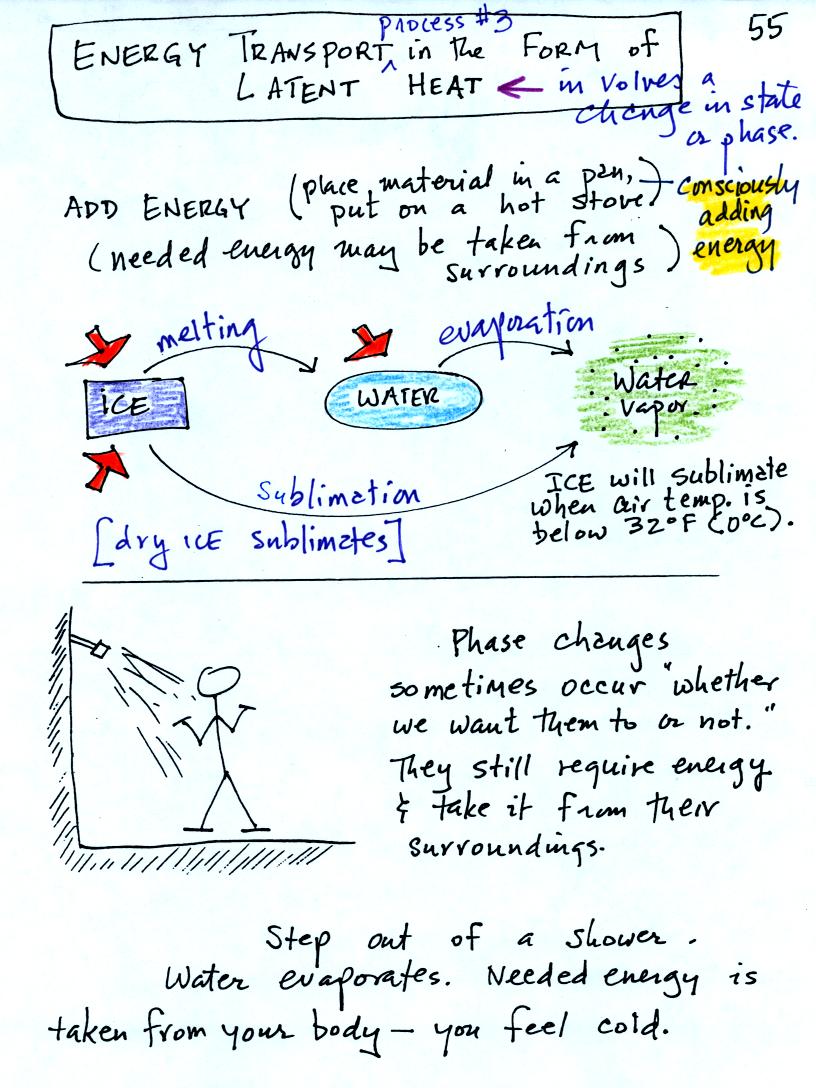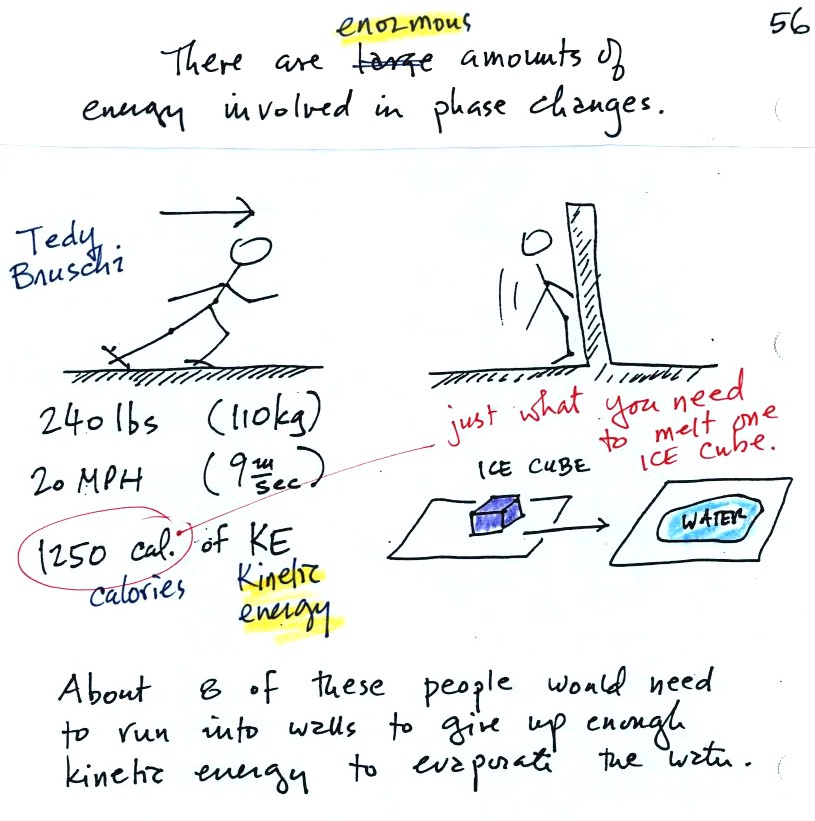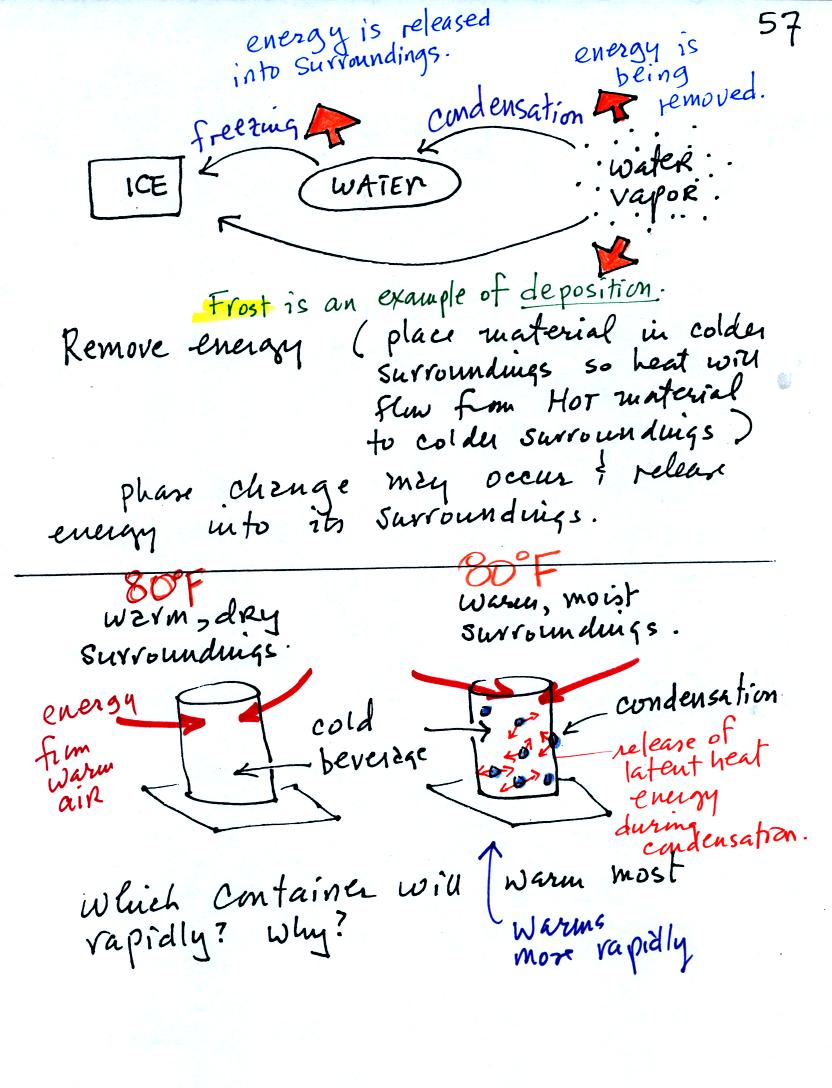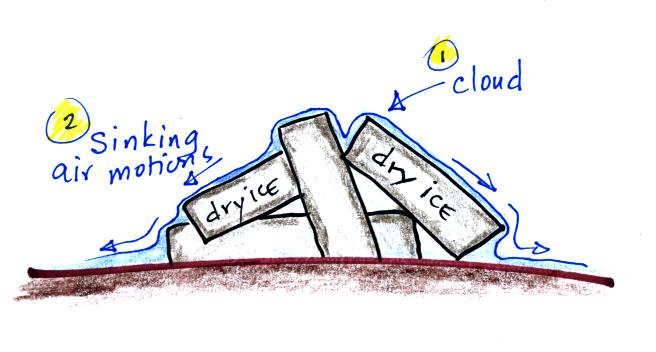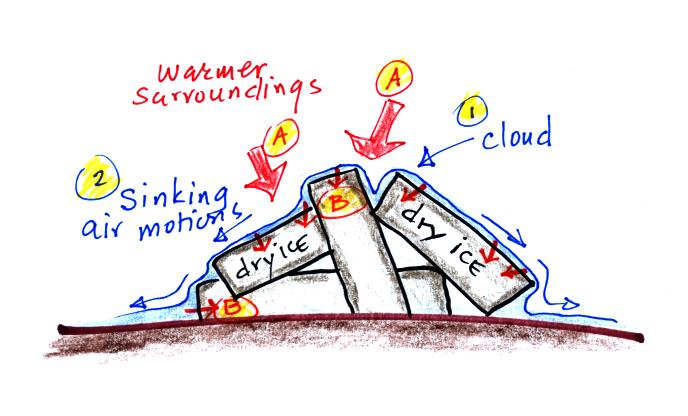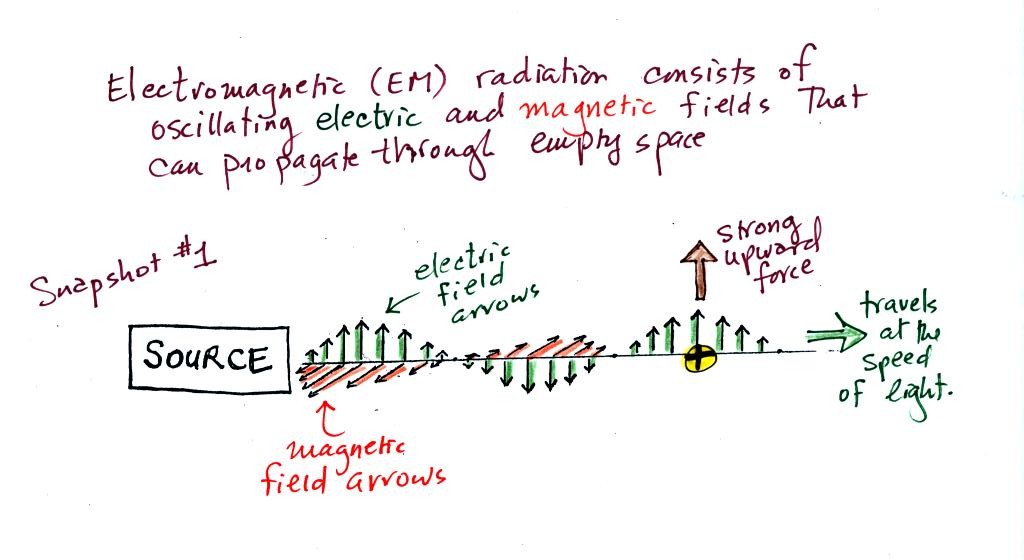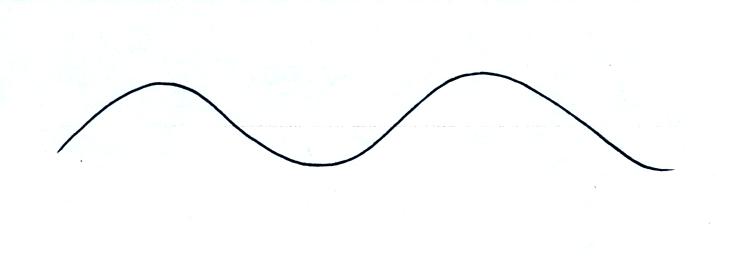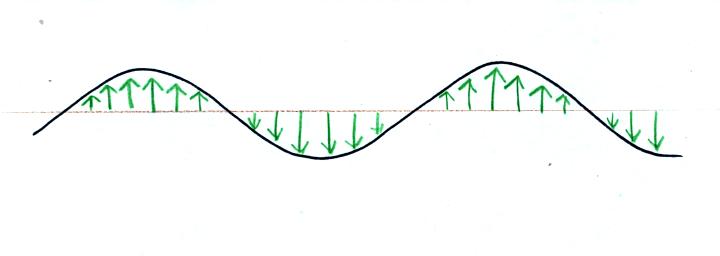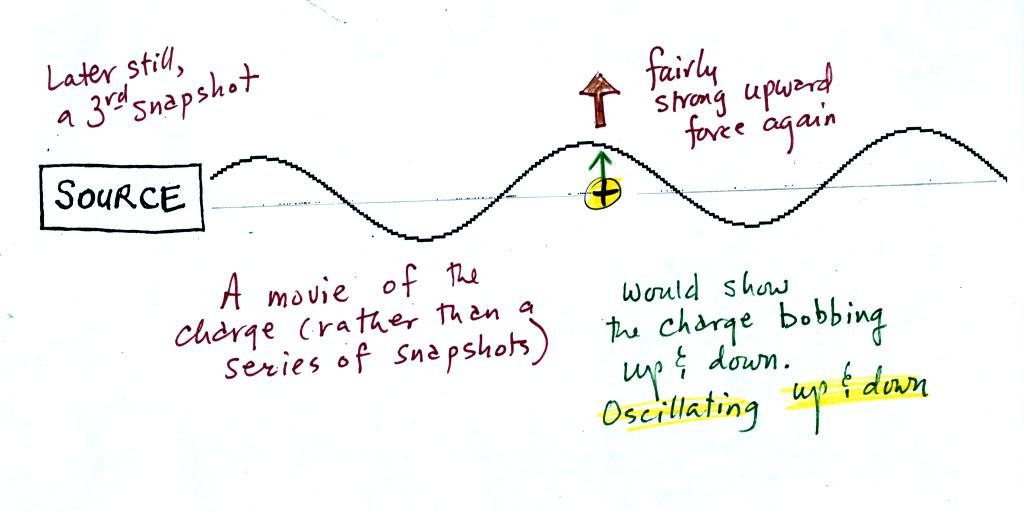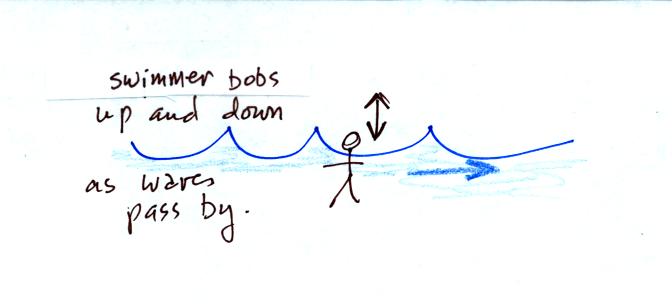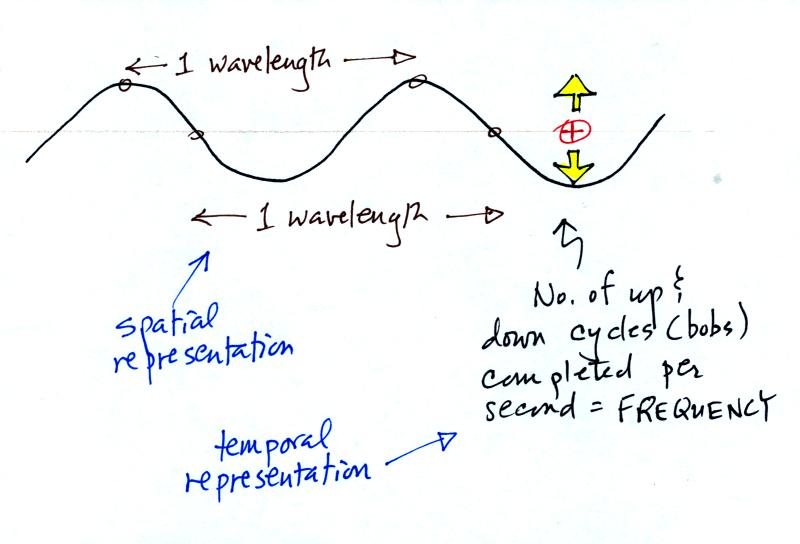
The blue arrows show the electric
field at the locations of two positive charges.
The figure below shows the directions of the forces. The
sizes of the arrows show the force.

You'll find the following on p. 60
in the photocopied ClassNotes.
We imagine turning on a source of
EM radiation and then
a
short time
later we take a snapshot. The EM radiation is a wavy pattern of
electric and magnetic field arrows. We'll ignore the magnetic
field lines. The E field lines sometimes point up, sometimes
down. The pattern of electric field arrows repeats itself.
Note the + charge near the right
side of the picture. At the time
this
picture was taken the EM radiation exerts a fairly strong upward force
on
the
+
charge.
Textbooks often represent EM
radiation with a wavy line like shown
above. But what does that represent?
The wavy line just connects the
tips of a bunch of electric
field
arrows.
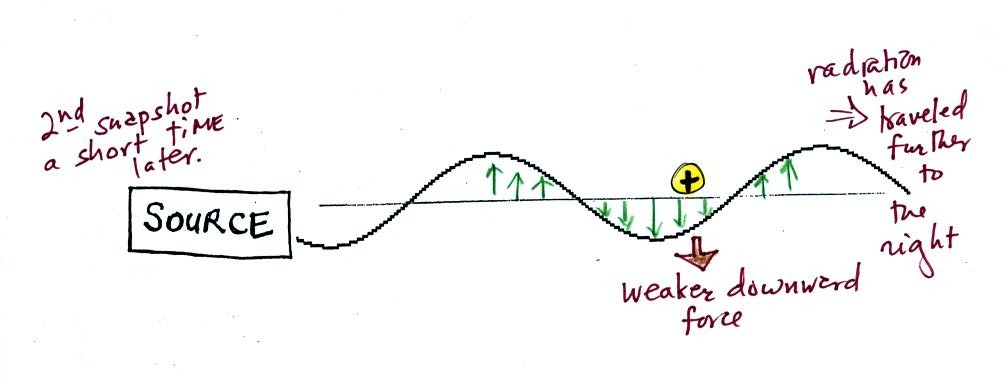
This picture was taken a short time
after the first snapshot when
the radiation
had
traveled a little further to the right. The EM radiation now
exerts a somewhat weaker downward force on the + charge.
The +
charge is now being
pushed upward again. A
movie
of
the +
charge, rather than just a series of snapshots, would show the
charge
bobbing up and down much like a swimmer in the
ocean would do as waves passed by.
The wavy pattern used to
depict EM radiation can be described spatially in terms of its
wavelength,
the distance between identical points on the pattern. By
spatially we mean you look at different parts of the radiation at one
particular instant frozen in time. The following figure
wasn't shown in class on Wednesday. This is about where
we'll start on Friday.
Or you can
describe the radiation temporally
using the frequency of oscillation
(number of up and down cycles completed by an oscillating charge per
second). By temporally we mean you at one particular point for a
certain period of time.
We spent the last few minutes of
class wathcing the last of the Piccard video
segments. This one featured Bertrand Piccard (Jacques son,
Auguste's
grandson). He was one member of the two-man team that first
circled the globe non-stop in a balloon.
There were actually balloons in the air at the same time. The
first was
the Cable and Wireless Balloon piloted by Andy
Elsen & Colin Prescot. They launched Feb. 17,
1999 from Almeria, Spain and built up a 10 day
lead.
The second balloon was the Breitling
Orbiter 3 with Brian Jones & Bertrand
Piccard. They launched launched Mar. 1, 1999 from Chateau
D'Oex,
Switzerland.
The Cable and Wireless balloon crashed into the ocean just
off the coast of Japan. Piccard and Jones became, on Mar. 20, the
first people to complete a non stop trip around the globe in a balloon.
